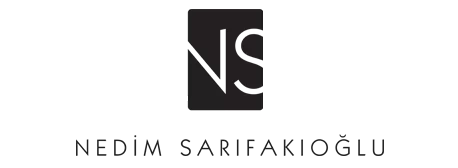What Expectations Should Rhinoplasty Meet?

The nose which is functional and aesthetic unit, is the most important determinant and complementary organ of our image. Aesthetic, Plastic and Reconstructive Surgery Specialist Assoc. Dr. Nedim Sarifakioglu gave all details about rhinoplasty.
Why is rhinoplasty the most common facial aesthetics surgery/facioplasty in the world?
One of the reasons that that rhinoplasty is performed more frequently than other facial plastic surgeries is the rich anatomical diversity of the facial oval with its 3-dimensional projectile structure and its functional role.
Another reason is that rhinoplasty is not intended for the “rejuvenation” which is performed to remove signs of aging after a certain age, but for the purpose of reshaping procedures (or functional breathing) and image rejuvenation. Therefore, most the surgeries are performed at the ages of 18-24, when the facial development is completed (and characteristic facial image).
What does the nose represent in terms of Gestalt Perceptual Principles and Anthropometric?
In terms of embryological aspect, the multi-layered and sized nose which many groups of cells come together to shape, may appear in harmonious or inharmonious with the face depending on its anatomical diversity.
Historically, when it comes to big nose, it is almost referred the big nose compared to the face.
In terms of psychological aspect, big nose is perceived and observed bigger and anterior/ahead than normal, in all people with indistinct and flattened cheekbones and small jaw.
The width-height-length ratio of the nose itself is perceived as “beautiful” regardless of whether it is large or shapeless.
This spatial position of the nose in the face oval where the chin, forehead and cheekbones are located, gives the person a unique privilege. These anatomical variations determine the image of that person and give the person a unique charisma.
Many people who are aware of this extraordinary anatomical deviation (unique characteristic) use these differences skilfully in their art or stage. For this reason, an aesthetic nose for a character actor is a nose that is quite satisfactory but does not characteristic and spectacular in terms of being harmonious with the face.
The role of the nose shape which is formed tip-tilted, straight and symmetrical lines, is limited to a beautiful image. The main elements which provide depth and character to the nose are the anatomical relationships of the face with other aesthetic structures (proximity, continuity, proportional and angular). This issue is defined and determined within the framework of Gestalt Perceptual Principles.
Is it true that the best whiskey tasters are snakes?
The nose is breathing and odour/taste sensory organ. The more the nose develops in the evolutionary steps and the distance increase between the nose and the soil, the more it starts to lose its sense of smell and taste. Yes, we are not the best tasters (pheromone, fragrance/perfume/whiskey etc.), it can be snakes, wolves and bears with having a closer nose than ours.
For people who find themselves in the last ranking in the smell and taste perception league but are not very interested in this ranking, the nose can afford to have multiple rhinoplasty to satisfy the need for approval in the 21st century pop aesthetic culture.
The expectations to be met in the rhinoplasty and Simon Effect
Harmonious with the face: Harmonious with the skeletal and soft tissues, especially the skin,which is involved in the facial aesthetic evaluation of the person, is the first condition in the planning of rhinoplasty. A nose which is not in harmony with the face cannot be perceived as beautiful.
Natural Nose: The nose which is not observed to be operated, indicates that the surgery is performed at the art level and quality. We don’t want flashing noses. When talking to someone or when you enter a room, the nose should certainly not to be first organ that attracts the attention.
Considering that the first impression for a person occurs in 4 seconds, we can say that you will label yourself with an attractive curved and tip-tilted nose .
Individual: It is essential to plan in accordance with the anatomical and tissue characteristics of the person (thick skin, oily skin, weak cartilage, facial asymmetries, drug use, secondary surgery etc.).
Atraumatic technique: The surgical approach and technique chosen under the responsibility of the surgeon promises the quickest recovery while completing the shaping process with the quickest recovery.
Functional competence: A nose which cannot breathe leads to many diseases. The first expectation to be met in rhinoplasty is to ensure proper breathing or not to compromise this standard and comfort after surgery.
Body dysmorphic disorder: Making a non-exist/an imaginary defect or a small defect the purpose of life by imposing an inappropriate / irrelevant meaning in terms of mental and emotional aspect, is most commonly observed in people who wants to have rhinoplasty.
SIMON EFFECT is defined by Gorney and Martello in 1999 by using acronym called SIMON. Simon effect is an acronym for male patients who are single, immature, get above themselves and always want to have rhinoplasty. It is considered as the nose version of body dysmorphic disorder.
Biopsychosocial well-being: It’s a definition of health by The World Health Organization. The current state is that this state of well-being is sustainable. Successful rhinoplasty surgeries provide to patient both physical (appearance/breathing), psychosocial (self-esteem) and social gains (self-confidence, desire for socialization etc.), and a sustainable development, recovery and health mentioned in the definition.
The perception of “immediately apply to a plastic surgeon” is wrong!
In fact, if you plan to have rhinoplasty you should start questioning yourself and then your surgeon immediately.
Aesthetic, Plastic and Reconstructive Surgery Specialist
Assoc. Dr. Nedim Sarifakioglu
www.ankaraestetikcerrahi.com
Facebook: @NedimSarifakioglu
Instagram: @nedimsarifakioglu
YouTube-Doç. Dr. Nedim Sarıfakıoğlu



